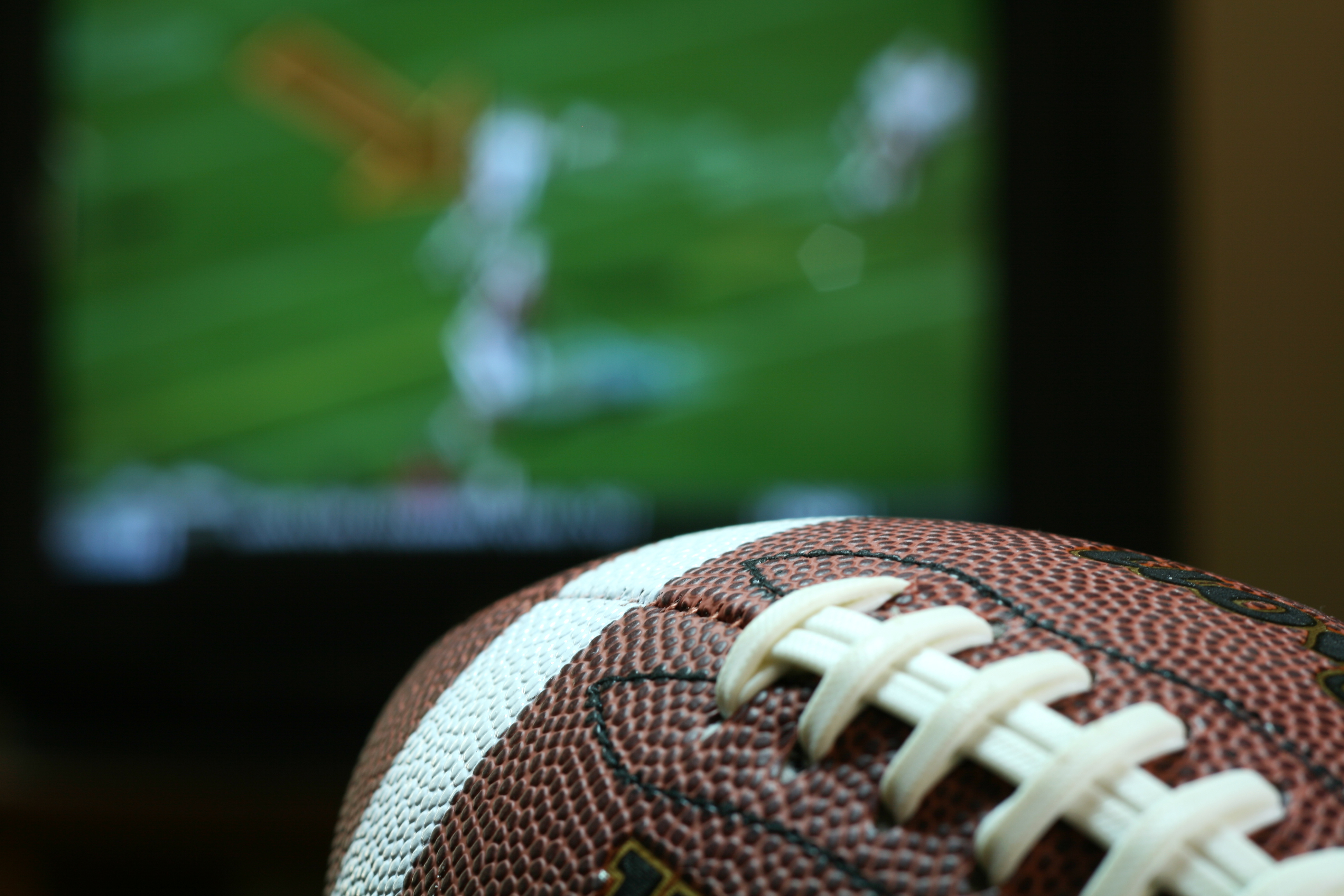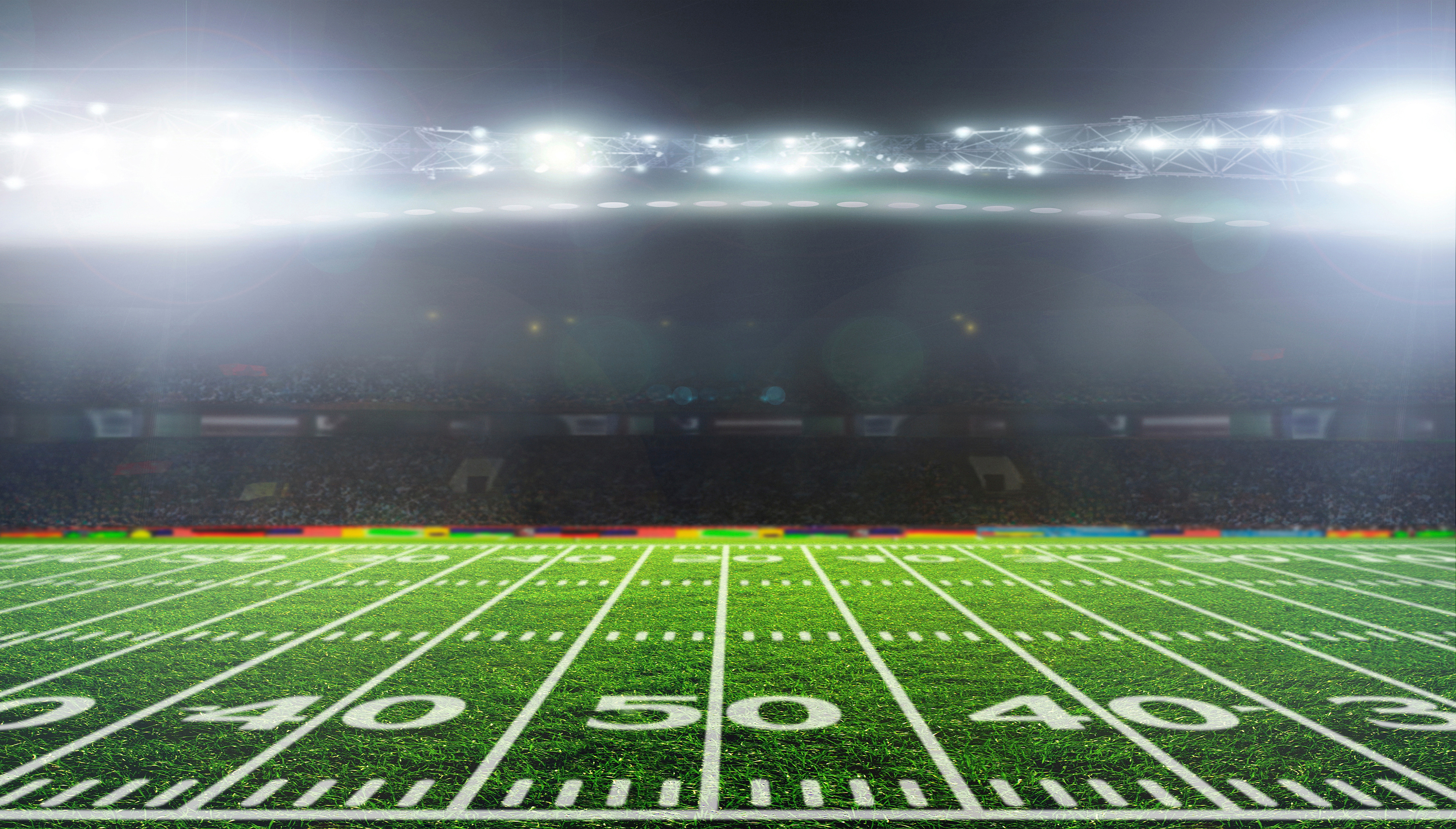
After months of cheering on their favorite football teams, Super Bowl LIX is finally coming to the US. The Chiefs versus the Eagles – and one team is taking home that coveted trophy.
Before and during the game, they’ll use over 100 footballs to keep things fair. How are these footballs made and how does their weight impact the game fans will watch this Sunday? Let’s explore.
How are NFL Footballs Made?
NFL footballs are all made by a dedicated team at The Wilson Sporting Goods Football Factory in Ada, Ohio. Here’s their process:

1. A tool like a cookie-cutter cuts sheets of cowhide into four almond-shaped pieces to construct each football.
2. They press the football company brand and other customised details into one of the sheets.
3. A seamstress sews cotton onto the underside of each leather piece to lend strength.
4. They sew each of the four sections together, using steam to make the leather flexible and easy to work with. The top stays open.
5. They then stuff the rubber bladder that holds the air inside the open top. They add enough air to make lacing easier.
6. Next, they sew the top closed with a thick, strong synthetic lace. (Football players line their fingers up with the lace for a better throwing grip.)
7. They fully inflate the footballs with standard air pressure.
8. They weigh each completed football on an electronic balance scale. They also measure the length and width. This quality control process helps make sure that each football is within standards.
9. Finally, they send off the approved footballs to your favorite team.
How Does the Weight of a Football Impact the Game?
The Standard
A standard NFL football must weigh between 397 and 425 grams. Most of this weight is the materials, but some of it is air pressure. Each ball has between 12.5-13.5 pounds per square inch (PSI) of pressure.
Our with its color changing display is ideal for determining whether the ball is within limit quickly and efficiently. Requiring a weight range for footballs helps players. This way, they know what to expect and how to handle each one, which prevents unfair advantages.

During the Super Bowl this Sunday, they’ll use at least 120 footballs. Half for one team, half for the other, and a few dedicated for kicking. They’ll likely bring even more for practice and some to keep as back-ups.
About two-and-a-half hours before kickoff, the footballs intended for game use will all examined by an official. They'll weigh, measure, check for air pressure, and pass approval, then bring them to the field.
Because they split the 120 footballs in half and give them to each team, those teams will mostly use and interact with their own side's footballs. With the exception, of course, of interceptions and fumbles. They play a new football every down.
Deflate-Gate
Many remember “deflate-gate,” back in 2015. Deflate-gate is a controversy wherein the New England Patriots’ quarterback Tom Brady was accused of cheating. Allegedly, he and the Patriots were involved in the deflation of his team’s footballs, about 140.6 grams per square centimetre below standard.
Regular NFL games use about 12 – 24 footballs per team instead of 60 or so. After an interception by the Indianapolis Colts against the Patriots in 2015, that ball was handed over to be replaced with a new one as normal.
An official noticed that the ball had lost more weight and air pressure than expected, prompting an investigation. As the footballs had been approved about two hours before the game, the deflation would have had to have occurred in the span of time after approval and before kickoff.

Deflating footballs reduces the volume of air inside, impacting the weight of the football itself. It also makes the football more malleable, so it’s easier to grip and throw. Had the Patriots been using deflated footballs during their game against the Colts, it may have been a contributing factor for their win that day. Seeing as that win led the Patriots to the Super Bowl that year, it was especially important to rule out cheating.
However, the Patriots denied these claims, suggesting instead that external temperature changes between the approval room and the field caused the deflation.
Some sources argue that cheating is more likely since the weather would have impacted all footballs, rather than just the Patriots’. Other sources say there is a lack of proof, and we should give the team the benefit of the doubt. What do you think? Let us know in the comments.
How Else Does Weight Impact Football?

Not only does the weight of the footballs have an impact on the game, but the weight of the players themselves also matters. As you may know, there’s a lot of tackling in this game, as well as quick maneuvers and exciting sprints down the field. The size and weight of the player will have an impact on which positions they’re able to play – so if one wants to stick to their favorite position, they’d better stay consistent.
For example, most of the linebackers are heavier than the average of their team. This is because they need to act like boulders, blocking, tackling, and just being difficult to get around. If they’re light as a feather, the opponent will mow them down without issues.
Running backs are lighter, on the lower end of the average, as they need speed and agility to score touchdowns. Those gaining or losing more than they intended may experience some unforeseen consequences.
To measure their weight, professional athletes often weigh themselves on our stainless steel athlete scales, with capacities between 150kg and 300kg. Our heavy duty are also popular, with capacities up to 600kg.
Whether the Chiefs or the Eagles win, we hope you tune into Super Bowl LIX – and you share your newfound knowledge of official football weight measurements with your viewing party.

Looking for a weighing scale or balance but not sure where to start? Contact our team for help.




